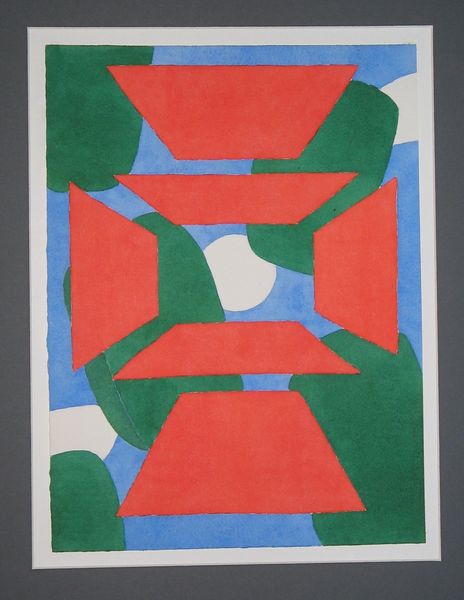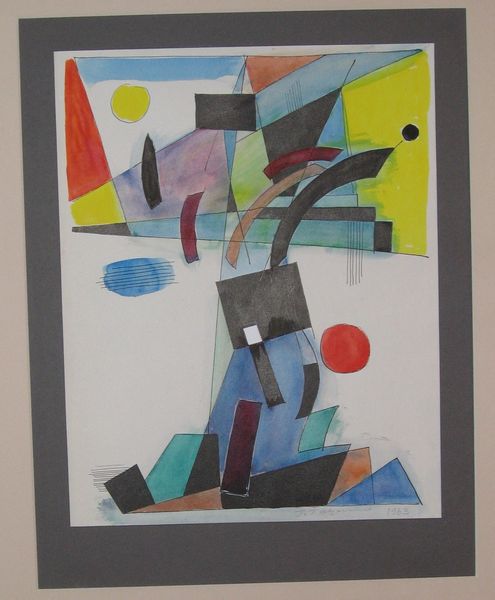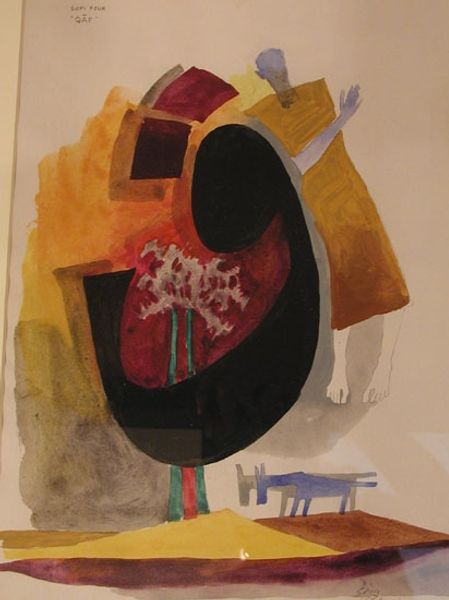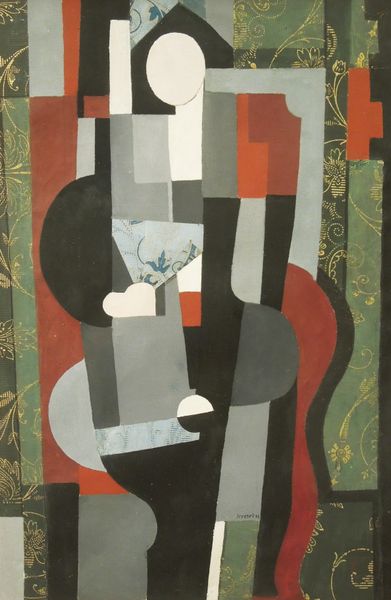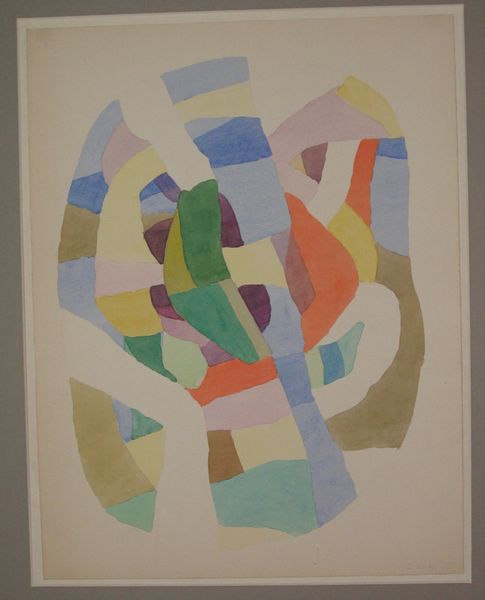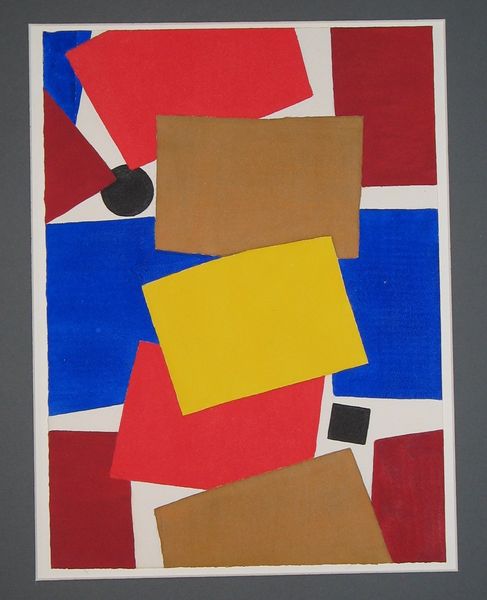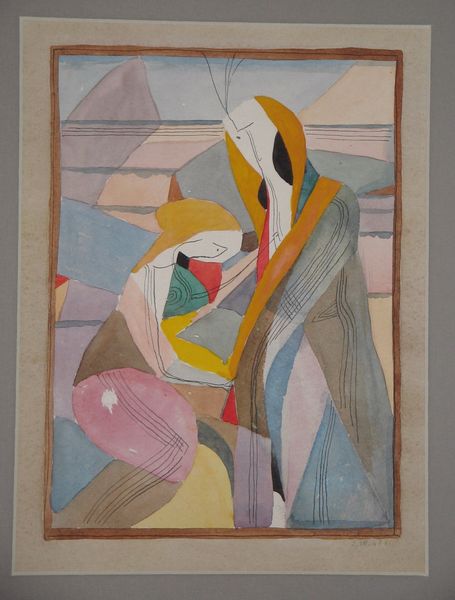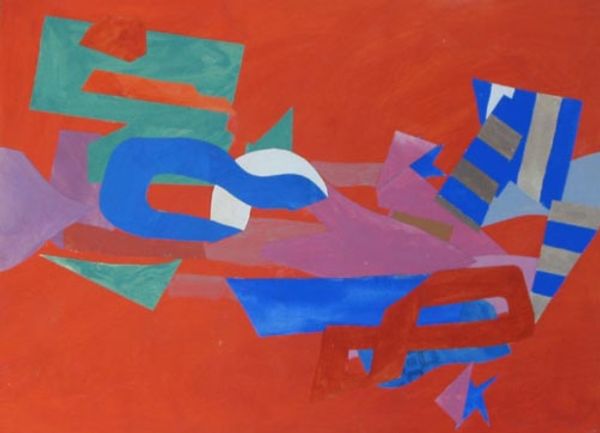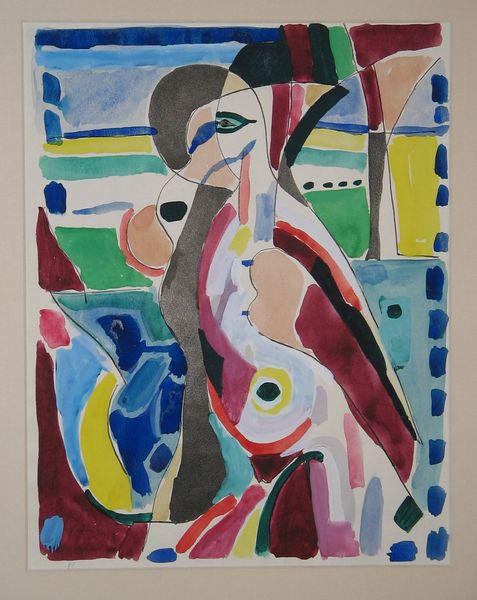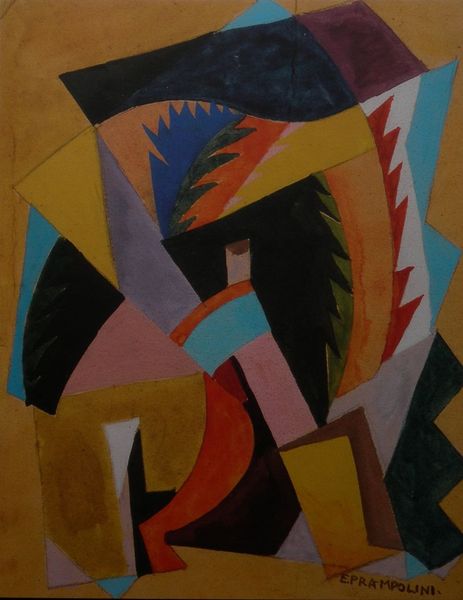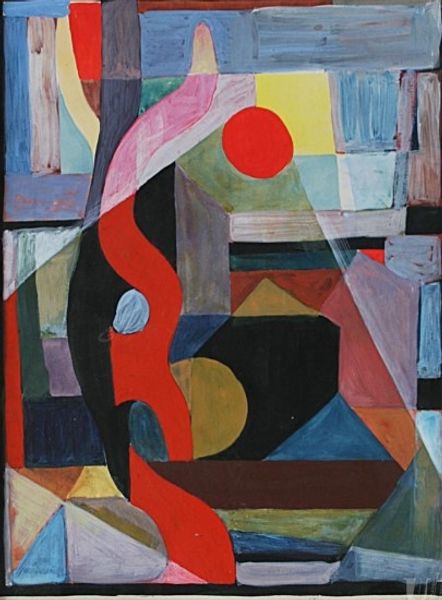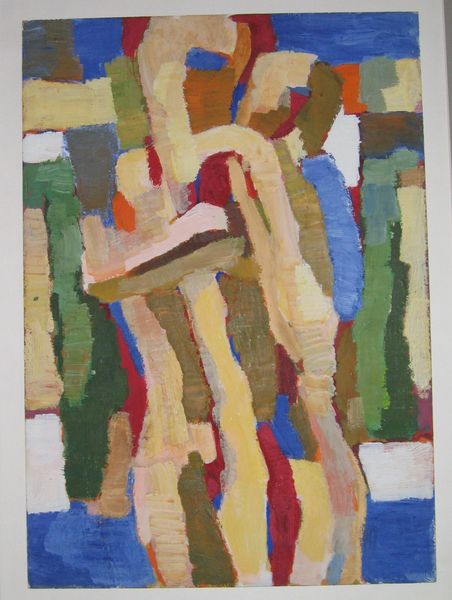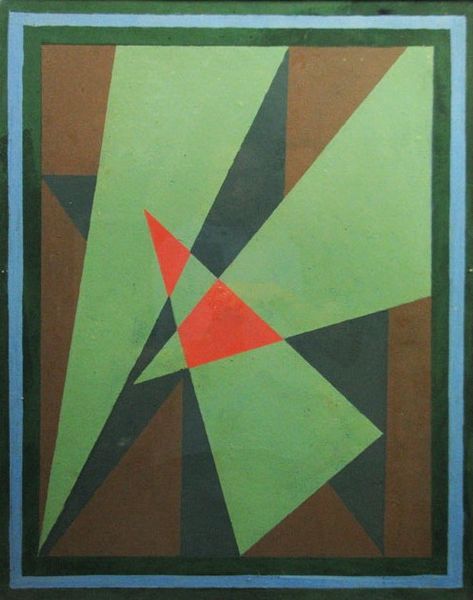
acrylic-paint
#
abstract-expressionism
#
non-objective-art
#
acrylic-paint
#
acrylic on canvas
#
geometric-abstraction
#
abstraction
Copyright: Hryhorii Havrylenko,Fair Use
Curator: We’re looking at “Composition (abstract)” a 1962 work by Hryhorii Havrylenko, a piece rendered with acrylic paint, currently held in a private collection. Editor: My first impression is the bold contrast of the red form against the muted, almost pastel backdrop. The geometric shapes give it a dynamic, energetic feel. Curator: Indeed. Considering the date, 1962, Havrylenko was likely engaging with the abstract expressionist movement, but perhaps filtering it through a distinctly Ukrainian lens during the Soviet era. How might the sociopolitical climate have informed such an exploration of pure form, divorced from representational content? Editor: The interplay of forms—the sharp angles against the curves—suggests a deliberate compositional strategy. I find myself analyzing how each shape balances against the others. The color palette, while restricted, offers a richness that holds the viewers gaze. Curator: To understand the impact of abstraction, we might also reflect on its potential as a visual language of resistance, offering artists a way to critique dominant ideologies while seeming only to explore formal concerns. Havrylenko’s abstraction sidesteps direct commentary, becoming subversive by being purely, visually assertive. Editor: I agree. There’s an undeniable tension between the rigid geometric structure and the more organic quality of the painted surface. The brushstrokes remain visible, a tactile reminder of the artist’s hand and it leads one to ask what Havrylenko intended. Curator: He could have been hinting at both the constricting forces of a totalitarian regime, while simultaneously conveying the possibility of individual expression. It also makes me wonder about what and who influenced him. Editor: Examining the structure alone, this could also represent pure composition, exploring formal relationships and aesthetic balance, a space that might be completely detached from the political realities. There is no explicit narrative to limit it, thus one could find themselves wandering with Havrylenko. Curator: Perhaps in Havrylenko’s “Composition (abstract)” the two readings intersect. Editor: Regardless, the way Havrylenko manipulated color and space is worthy of attention and speaks to how it defies the era of its time.
Comments
No comments
Be the first to comment and join the conversation on the ultimate creative platform.
